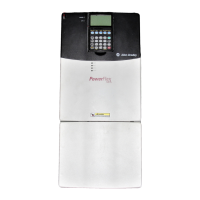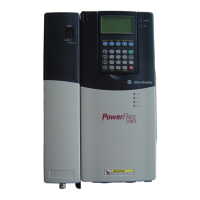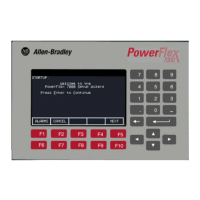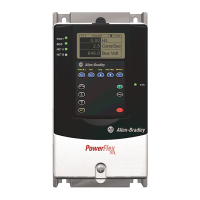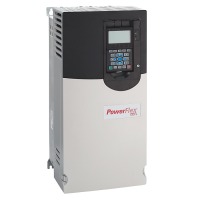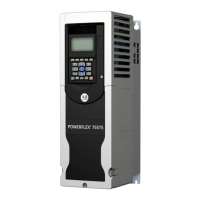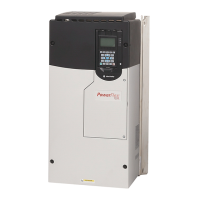32 Rockwell Automation Publication 20D-TD002L-EN-P - July 2018
PowerFlex 700S Drives with Phase II Control
Cooling Fan Voltage for Common Bus Drives
Common Bus drives require user supplied 120V or 240V AC to power the cooling fans. The power source is connected
between “0V AC” and the terminal corresponding to your source voltage (see Power Terminal Block Details, Frames 5 &
6 Terminal Block Locations on page
39 and Power Terminal Block Details on page 46).
Cable Types Acceptable for 200…600 Volt Installations
A variety of cable types are acceptable for drive installations. For many installations, unshielded cable is adequate,
provided it can be separated from sensitive circuits. As an approximate guide, allow a spacing of 0.3 meters (1 foot) for
every 10 meters (32.8 feet) of length. In all cases, long parallel runs must be avoided. Do not use cable with an insulation
thickness less than or equal to 15 mils (0.4mm/0.015 in.). Use Copper wire only. Wire gauge requirements and
recommendations are based on 75° C. Do not reduce wire gauge when using higher temperature wire. See table below.
Unshielded
THHN, THWN, or similar wire is acceptable for drive installation in dry environments provided adequate free air space
and/or conduit fill rates limits are provided. Do not use THHN or similarly coated wire in wet areas. Any wire that is
chosen must have a minimum insulation thickness of 15 Mils and should not have large variations in insulation
concentricity.
Shielded/Armored Cable
Shielded cable contains all of the general benefits of multi-conductor cable with the added benefit of a copper braided
shield that can contain much of the noise that is generated by a typical AC drive. Strong consideration for shielded cable
should be given in installations with sensitive equipment such as weigh scales, capacitive proximity switches, and other
devices that may be affected by electrical noise in the distribution system. Applications with large numbers of drives in a
similar location, imposed EMC regulations or a high degree of communications/ networking are also good candidates
for shielded cable.
Shielded cable may also help reduce shaft voltage and induced bearing currents for some applications. In addition, the
increased impedance of shielded cable may help extend the distance that the motor can be located from the drive without
the addition of motor protective devices such as terminator networks. Refer to Reflected Wave in “Wiring and
Grounding Guidelines for PWM AC Drives,” publication
DRIVES-IN001.
Consideration should be given to all of the general specifications that are dictated by the environment of the installation,
including temperature, flexibility, moisture characteristics, and chemical resistance. In addition, a braided shield should
be included and be specified by the cable manufacturer as having coverage of at least 75%. An additional foil shield can
greatly improve noise containment.
A good example of recommended cable is Belden® 295xx (xx determines gauge). This cable has four XLPE insulated
conductors with a 100% coverage foil and an 85% coverage copper braided shield (with drain wire) surrounded by a
PVC jacket.
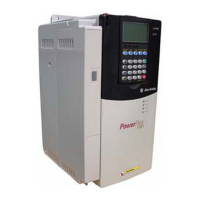
